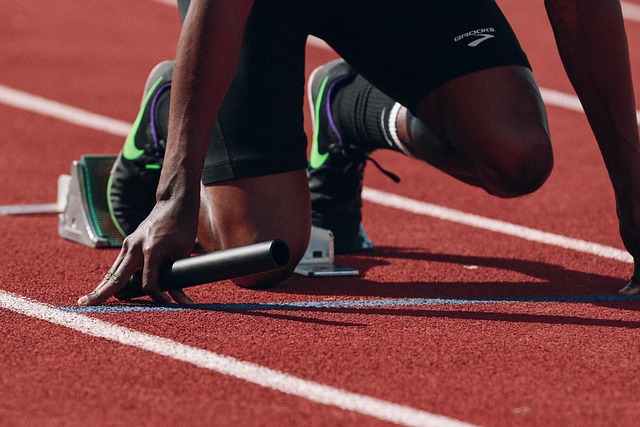Platelet-rich plasma (PRP) therapy harnesses the body's natural healing power for muscle injuries, offering a minimally invasive approach preferred by athletes. Recovery times vary based on age, injury type and severity, with younger patients typically recovering faster. Side effects include temporary discomfort at injection sites, but PRP stimulates tissue repair leading to increased mobility and reduced pain. Long-term results show many patients experience reduced pain and improved function for months to years after treatment. Tracking progress through check-ups and adopting a healthy lifestyle enhances PRP therapy benefits.
“Discover the potential of Platelet-Rich Plasma (PRP) therapy for accelerating muscle recovery. This innovative treatment has gained traction for its ability to harness the body’s natural healing process. Understanding PRP therapy for muscle injuries is the first step towards optimal recovery. Learn about the factors influencing treatment speed, what to expect in the initial weeks, and how to track progress. By exploring these aspects, you’ll gain insights into achieving faster, more effective results from PRP therapy.”
Understanding PRP Therapy for Muscle Injuries
PRP therapy, or platelet-rich plasma treatment, has gained significant attention as a novel approach to managing muscle injuries. This therapeutic method harnesses the body’s natural healing mechanism by utilizing a patient’s own blood to accelerate tissue repair and regeneration.
During PRP therapy for muscle injuries, a small amount of blood is drawn from the patient and spun in a centrifuge to separate out the platelet-rich plasma. This concentrated plasma is then injected into the affected area, rich in growth factors that promote cell proliferation and stimulate healing processes. The procedure is minimally invasive, making it an attractive option for athletes and individuals seeking faster recovery without extensive downtime associated with traditional surgical interventions.
Factors Affecting Treatment Results and Speed
The effectiveness of PRP therapy for muscle injuries can vary greatly among individuals, and several factors influence the speed at which results are seen. The overall health and age of the patient play a significant role; younger patients with active lifestyles may experience faster recovery due to better circulation and a more robust healing response. Conversely, older individuals might take longer to show results as their bodies’ natural healing mechanisms can be slower.
The type and severity of the muscle injury is another critical consideration. Acute, mild injuries may resolve in as little as 2-3 weeks with PRP treatment, while chronic or severe cases could require several months for significant improvements. Additionally, the concentration and quality of platelet-rich plasma used in the therapy are essential. Higher concentrations of platelets have been linked to improved results, as these cells release growth factors that stimulate tissue repair and regeneration.
What to Expect in the First Few Weeks
In the initial phase following Platelet-Rich Plasma (PRP) therapy for muscle injuries, individuals can anticipate a period of recovery and gradual improvement. During the first few weeks, it’s common to experience some discomfort, swelling, or bruising at the injection sites. This is a normal part of the healing process as the body responds to the enhanced growth factors delivered by PRP. Many patients report increased mobility and reduced pain over this timeframe, though individual results may vary.
As the body utilizes the injected PRP, you might notice an enhancement in muscle strength and flexibility. The pace at which these improvements manifest can differ from person to person, depending on various factors like the severity of the injury, overall health, and adherence to post-treatment recommendations. It’s crucial to approach recovery with patience, as it may take several weeks or even months to realize the full potential benefits of PRP therapy for muscle injuries.
Tracking Progress and Long-Term Outcomes
Tracking progress is a crucial aspect of understanding the effectiveness of PRP therapy for muscle injuries. Patients often expect immediate results, but it’s essential to manage expectations. The healing process varies depending on the severity of the injury and individual responses. Typically, improvements can be observed within a few weeks or months after treatment. Regular check-ups with healthcare professionals are vital to assess progress. They can measure various factors like pain levels, muscle strength, range of motion, and any signs of tissue regeneration.
Long-term outcomes for platelet-rich plasma (PRP) therapy in muscle injuries show promising results. Many patients report significant reductions in pain and improved overall function. In some cases, the effects may be noticeable for several months or even years after treatment. However, maintaining a healthy lifestyle, including regular exercise and proper nutrition, is essential to support the body’s natural healing process and maximize the benefits of PRP therapy.
PRP therapy shows promising results for muscle injuries, but the timeline to seeing improvements varies. Understanding the factors influencing treatment outcomes, such as injury severity and individual healing capabilities, is key. In the initial weeks, patients may experience reduced pain and inflammation, with further gains observed over several months. Consistent tracking of progress ensures optimal care and helps determine long-term success of platelet-rich plasma for muscle injuries.
